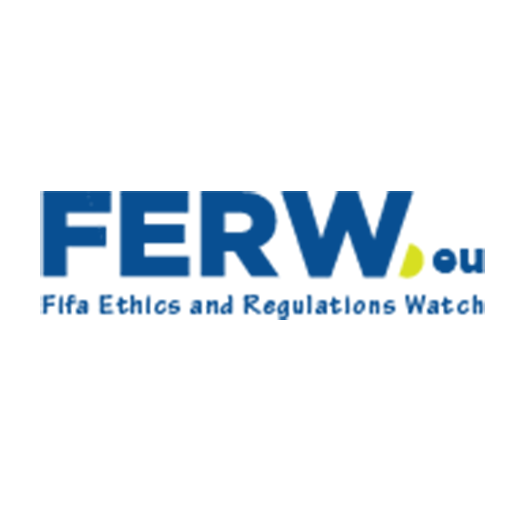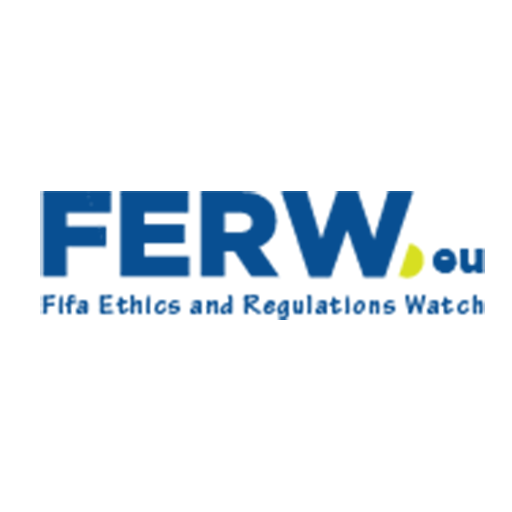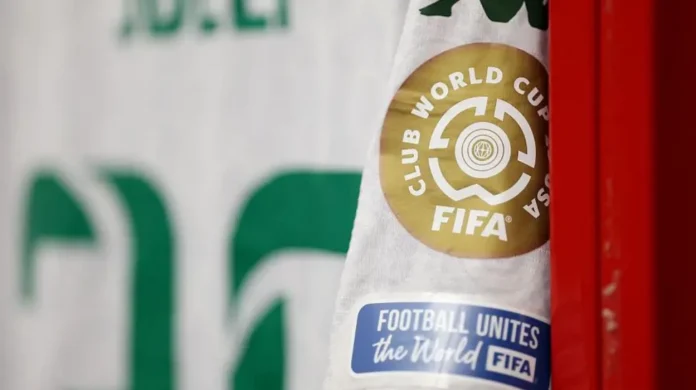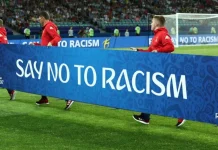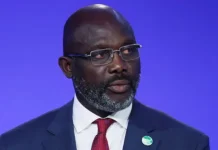FIFA unveiled new anti-discrimination policies in a bid to eliminate racism, homophobia and other abuses that have encompassed international football. One of its strongest reforms was the strengthening of the three-step process initiated by the referee: stop, suspend, and abandon, in case of abuse persistence.
The steps are aimed at providing the authorities with unquestionable power to react to acts of discrimination on the field. Moreover, FIFA gave power to practice this appeal action in case a national federation may impose insufficient sanctions by FIFA to the National Court of Arbitration. This system was started by the legislature so as to maintain uniformity and prevent soft justice by the local government authorities. Alongside disciplinary steps, FIFA launched a symbolic gesture, crossed arms held overhead, as a universal visual signal of racism encountered on or off the field.
The financial scope of enforcement was also expanded. Aggravating clubs and associations of national bodies can now incur fines up to CHF 5 million, an extreme jump in comparison to the older years. They said such funds would be used to shift to anti-discrimination campaigns and educate the football ecosystem.
Persistent Gaps Between Policy And Practice
Despite formal advances, the implementation of FIFA’s new measures has raised growing concern among players, activists, and observers. In the event of the 2025 FIFA Club World Cup staged in the United States, there are isolated occurrences of abuse (racial, homophobic, xenophobic) that did not receive any visible action according to the three-step procedure. Referees ignored crowd appeals and complaints of the players and carried on, damaging the same authority that the reforms were intended to strengthen.
As compared to the past global events, the Club world cup was not such a strong event where visual and speech content are constructed on the theme of inclusion. In stadiums, there was a striking lack of anti-discrimination pennants and public service advertisements. The online campaigns that FIFA usually organizes before their events in the past became almost invisible, especially those focusing on the aspects of diversity and equality.
Such lapses have attracted increased criticism that the anti-racism stance at FIFA is more of a smoke screen than serious action. The disparity in written policy and the playing field as enforced practice has left players and officials confused as to when and how interference should take place.
Growing Concerns From Human Rights Organizations
International watchdogs have flagged 2025 as a regression year in football’s anti-discrimination momentum. Such double standards by FIFA in 2025 risk undermining the credibility of its broader assurances of inclusivity, the Dignity 2026 Coalition, a global network of rights-based organizations focused on hosting countries of upcoming World Cups, said today.
Amnesty International has also stated that FIFA has lost urgency on its anti-racist messages. As the group noted, although such symbolic gestures as the crossed-arms sign were introduced, their effect is diminished since there is no consistent promotion and culture integration across the globe. They claim that historically oppressed groups, especially LGBTQ + fans and racial minorities, do not only need visibility, but also the security of assurance that they are respected and safe.
Around the upcoming 2026 FIFA World Cup the lapses are not mere empty talk: matches will be played in countries where there are radically different deficits when it comes to civil rights. Human rights organizations underline that the credibility of FIFA as an organization on a global level in sport will be determined by universal and non-negotiable standards of enforcement.
Challenges Posed By Political And Cultural Realities
Countries that are members of FIFA have such diverse cultures, and therefore, enforcement of universal policies is made difficult. In 2025, federations in several places of Europe and Latin America, showed their opposition to centralized edicts in Zurich. There were some countries that did not succeed to follow the referee protocol on all the competitive levels due to the logistical and cultural issues.
The difference is felt when progressive anti-discrimination policies are adopted in one part of the country as opposed to others where they are either not considered or weakly interpreted. This divergence has fostered confusion about the rules’ applicability and prompted calls for regional compliance benchmarks.
Another front that FIFA has busy itself with in the war against discrimination is the online space. Joining Asia and Africa, prominent practitioners in the African and Asian region still face specific racist attacks on such platforms as Instagram, TikTok, and X. In a retort, FIFA launched the Social Media Protection Service in February 2025, which would track the conduct of abuse through artificial intelligence moderation tools and multilingual content review teams.
Nonetheless, the service has been criticized with regard to issues that include little or no coverage and a lack of openness. Critics claim that FIFA did not realise how much online hate there could be and did not devote enough resources to shielding athletes at the time. Various affected players cited in statements to the media that they were not aware of the service, which is a major breakdown in communication.
Toward Effective And Sustained Change
The FIFA President, Gianni Infantino is still insisting that the reforms of 2025 have marked the era of accountability. In multiple press briefings, he emphasized that “discrimination will no longer find shelter in football, not in the stands, not in the dressing room, and not on the internet.” His speech tried to reassure the fans and players that FIFA does not only care about obeying procedures, they need to be transformed culturally as well.
However, the grass roots adoption is necessary, to make institutional change take root. Referees, coaches and match commissioners should be extensively retrained to master the new rules so that they are fully confident to enact them. In addition, disciplinary panels need to be responsive and do their work in a transparent manner-delays indicate bluntness or red tape.
The Critical Test Ahead For FIFA
The remaining months of 2025 will be pivotal for FIFA’s anti-discrimination framework. Upcoming qualifiers for the 2026 World Cup offer a live stage for FIFA to demonstrate whether its disciplinary machinery can function under pressure. Broadcasters, fans, and rights groups will closely monitor whether referees are empowered to halt matches, whether federations issue meaningful penalties, and whether digital safety mechanisms hold up against coordinated online attacks.
National football associations also face renewed pressure. Those failing to demonstrate tangible steps toward anti-discrimination compliance risk reputational harm, possible sanctions, or reduced hosting opportunities in future events. Countries bidding for tournaments beyond 2026 will be judged not only by infrastructure plans but also by human rights track records—especially regarding how well they address discrimination in sport.
The friction between ambition and application remains FIFA’s central challenge. Its reforms possess the potential to transform football into a truly inclusive domain. But unless principles are uniformly applied, players protected, and culture shifted, the world’s most global sport risks fragmenting along the same fault lines it claims to fight against. The 2026 World Cup will not just be a tournament of nations—it will be a referendum on FIFA’s ability to back its promises with unyielding practice.
